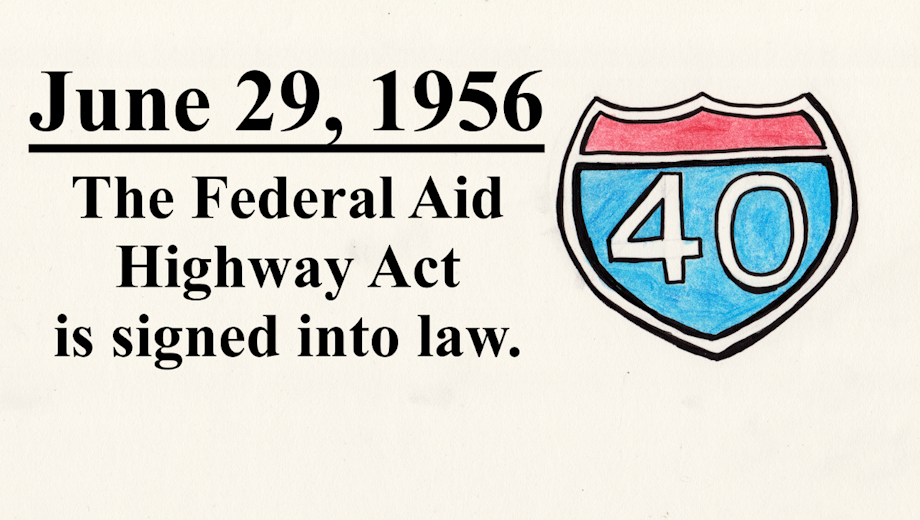On June 29, 1956, the Federal Aid Highway Act is signed into law by President Dwight D. Eisenhower. Also known as the National Interstate and Defense Highways Act, the legislation established funding for the construction of the Interstate Highway System in the United States. The new system of interstate highways were considered a part of national defense with the highways connecting major military bases and installations and allowing for the rapid movement of men and materiel across the country in case of war. Plans for a national highway system had been proposed as early 1916; however, it wasn't until Eisenhower's presidency that such a system was established. President Eisenhower's experiences in the Army, including his participation in the 1919 Motor Transport Corps convoy's journey across the US and his encounters with Germany's autobahn system during his deployment to Europe, caused him to champion the need for an interstate highway system and his signing of legislation establishing such.
The new highway system greatly reduced the time needed to travel across the country. For example, the journey which took the convoy in which Eisenhower had participated approximately two months could now be made in five days.
As of 2016, the Interstate Highway System measures approximately 48,191 miles (77,556 km) in total length.
Details
Published:
6 years, 5 months ago
30 Jun 2018 02:26 CEST
Initial: 14ec5bdd12be08d9ba590eb92720e31e
Full Size: e73c18a38400fdd45b6144f016f3f4b3
Large: c558cb537b51df02ba6cedc7572d3df0
Small: bd815a623f8415ce7b6c7945dc86d5b7
Stats
27 views
6 favorites
3 comments
